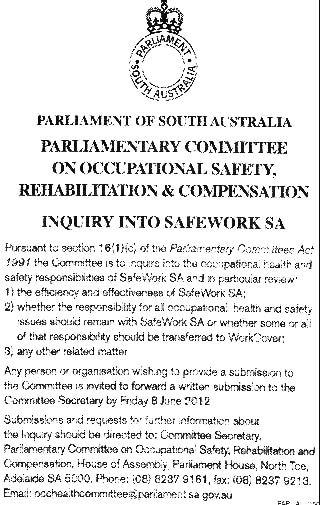
The workplace death of Jorge Castillo-Riffo continues to raise important discussions about occupational health and safety (OHS), responsibility and accountability. The South Australian parliament discussed scissor lifts and OHS on June 6 2019. The criticism of the Coroner was concerning and the debate was a sadly typical political discussion but the issue of improving OHS in construction sites has not been forgotten by some South Australia politicians.

